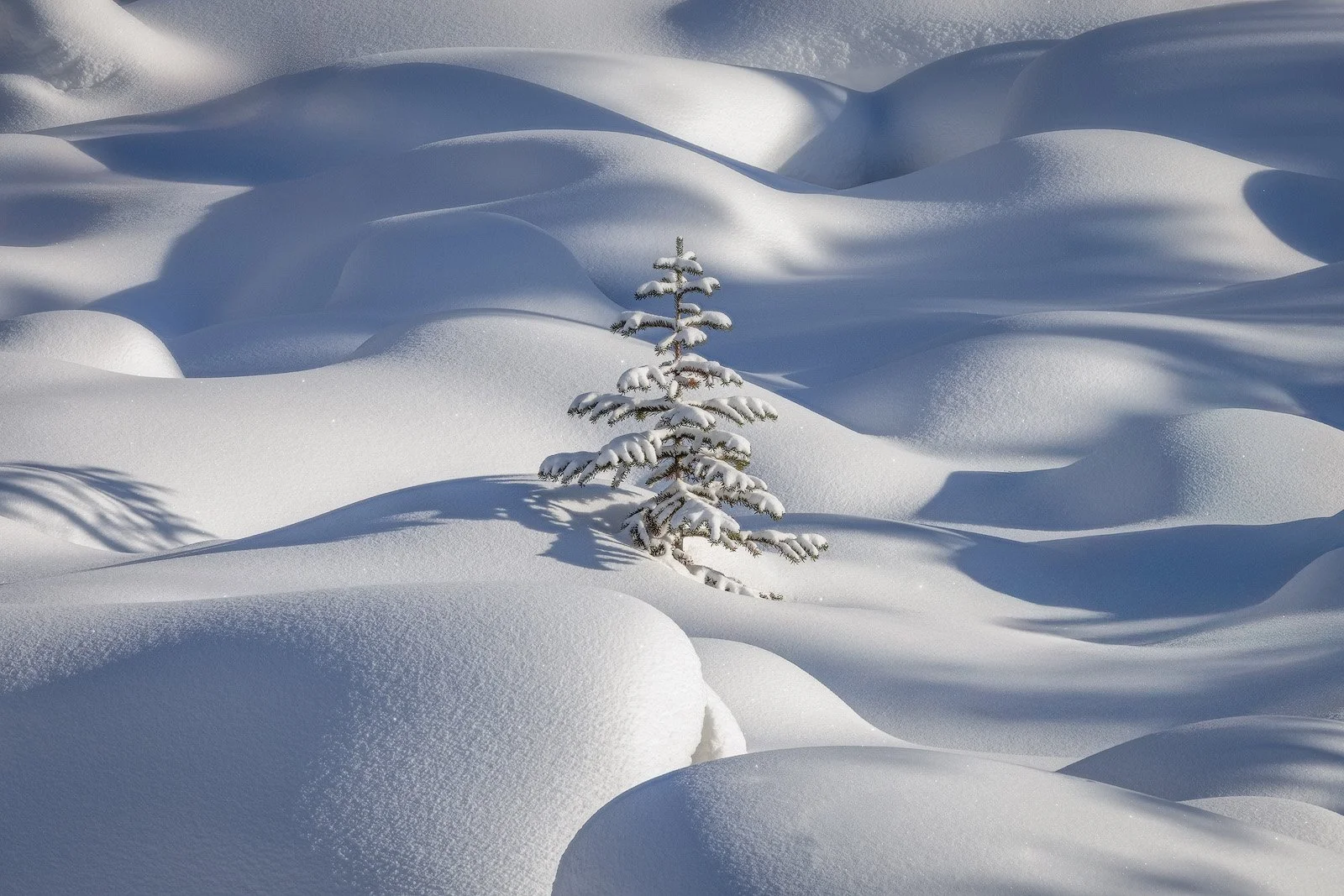 Image 1 of 1
Image 1 of 1


Silent Pillows of Winter
In the quiet reach of winter, a single fir tree stands against a field of unbroken snow. Its branches bear a dusting of frost, delicate as ash, while the land around it swells in gentle rhythm—soft ridges and hollows sculpted by wind, shaped by patience. The surface glows faintly under morning light, every curve holding the trace of motion that has long since passed. Shadows move like breath, shifting blue to silver, silver to white. Nothing stirs except the slow drift of air across snow. The silence feels absolute, yet full of presence.
The scene belongs to a subtler vocabulary of winter—one spoken in tone rather than contrast, gesture rather than spectacle. The snow lies untouched, a pure expanse that invites the eye to slow down, to listen. The fir’s dark silhouette anchors the composition, giving weight to the vastness around it. Its stillness feels intentional, a quiet act of endurance in a world reduced to form and light. The air is sharp and clear, the kind of cold that hums in the ears and heightens every sense.
Viewed from a distance, the landscape becomes abstraction—lines, planes, and shadows merging into the rhythm of simplicity. There’s comfort in the repetition of curves, in how each fold of snow catches light differently, no two shapes quite the same. What remains is balance: between emptiness and fullness, solitude and peace.
Silent Pillows of Winter is an ode to restraint—a moment where nature pauses between inhale and exhale, and the land seems to remember how to rest. In that quiet, everything essential reveals itself: light, shadow, and the quiet dignity of stillness.
In the quiet reach of winter, a single fir tree stands against a field of unbroken snow. Its branches bear a dusting of frost, delicate as ash, while the land around it swells in gentle rhythm—soft ridges and hollows sculpted by wind, shaped by patience. The surface glows faintly under morning light, every curve holding the trace of motion that has long since passed. Shadows move like breath, shifting blue to silver, silver to white. Nothing stirs except the slow drift of air across snow. The silence feels absolute, yet full of presence.
The scene belongs to a subtler vocabulary of winter—one spoken in tone rather than contrast, gesture rather than spectacle. The snow lies untouched, a pure expanse that invites the eye to slow down, to listen. The fir’s dark silhouette anchors the composition, giving weight to the vastness around it. Its stillness feels intentional, a quiet act of endurance in a world reduced to form and light. The air is sharp and clear, the kind of cold that hums in the ears and heightens every sense.
Viewed from a distance, the landscape becomes abstraction—lines, planes, and shadows merging into the rhythm of simplicity. There’s comfort in the repetition of curves, in how each fold of snow catches light differently, no two shapes quite the same. What remains is balance: between emptiness and fullness, solitude and peace.
Silent Pillows of Winter is an ode to restraint—a moment where nature pauses between inhale and exhale, and the land seems to remember how to rest. In that quiet, everything essential reveals itself: light, shadow, and the quiet dignity of stillness.
